On April 19th, I participated in the CSR Data Management Forum (conference site now no longer online), an entire day devoted to the cycles of processes involved in pulling together all the relevant information for sustainability transparency, starting with Data Collection, through Data Evaluation, Assuring the Data, Communicating CSR Data and a closing discussion, which I chaired, on Pulling it all Together. It's rare that a CSR conference is devoted specifically to the data management cycle and credit here is due to Paul Scott, MD of CorporateRegister.com who came up with the idea and opened up the proceedings. While data collection has an undisputable place in performance management, the focus of this day, was data collection for CSR transparency - either in the form of CSR Reports or in the form of CSR data submission to data aggregators such as the Carbon Disclosure Project or index-generators such as the DJSI.
Can Excel do the job?
The first session opened up with a debate between Credit360 (Iain McGhee) and Best Food Forward (Craig Simmons) who had been briefed to present opposing views about the merits of software systems for sustainability data management. Credit360 is one of the leading providers of sustainability software. After mentioning that only 24% (according to research by Ernst and Young) of reporting companies use software to gather their data, Iain McGhee went on to explain the types of software available. There is SaaS, Software as a Service, which is web-based, hosted by the provider (in the cloud) and enables input via the internet, and "on-premise" software, which means installing the software program on a company's servers and managing it technically in situ. If you are considering a software solution, SaaS seems to be the preferred option, as it doesn't require tons of technical work from your IT people and it is quite significantly lower cost. But, if only 24% of companies are using software, what are the rest using? Of course, we all know the answer to that: Excel! The good old spreadsheet option. On behalf of Credit360, Iain McGhee presented a detailed analysis demonstrating that Excel is wholly inferior for several reasons, such as lack of audit trail (anyone can make changes, which are not retained or identified by user), breaks in formulas which can disrupt entire data-sets and are hard to identify, lack of dashboard-type presentation tools, no solution for qualitative data and more. Just to whet our appetite, Iain referred to the Telefonica site as an example of how software-based tools can help generate fabulous interactive data presentation on websites.
The first session opened up with a debate between Credit360 (Iain McGhee) and Best Food Forward (Craig Simmons) who had been briefed to present opposing views about the merits of software systems for sustainability data management. Credit360 is one of the leading providers of sustainability software. After mentioning that only 24% (according to research by Ernst and Young) of reporting companies use software to gather their data, Iain McGhee went on to explain the types of software available. There is SaaS, Software as a Service, which is web-based, hosted by the provider (in the cloud) and enables input via the internet, and "on-premise" software, which means installing the software program on a company's servers and managing it technically in situ. If you are considering a software solution, SaaS seems to be the preferred option, as it doesn't require tons of technical work from your IT people and it is quite significantly lower cost. But, if only 24% of companies are using software, what are the rest using? Of course, we all know the answer to that: Excel! The good old spreadsheet option. On behalf of Credit360, Iain McGhee presented a detailed analysis demonstrating that Excel is wholly inferior for several reasons, such as lack of audit trail (anyone can make changes, which are not retained or identified by user), breaks in formulas which can disrupt entire data-sets and are hard to identify, lack of dashboard-type presentation tools, no solution for qualitative data and more. Just to whet our appetite, Iain referred to the Telefonica site as an example of how software-based tools can help generate fabulous interactive data presentation on websites.
Craig Simmons, on the other hand, works from the basis of two premises: (1) People think they want software when they really want business outcomes and (2) Specialist software tools are fast losing ground to better and less costly generic alternatives. He calls software tools "dangerously seductive", promising all sorts of seamless solutions when in fact, they have some minefields all of their own, such as difficulty of locating software errors and the need to get far more organized up front before the software can be properly used. Craig says Excel does the job well and quoted large businesses which manage data effectively with Excel. He also talked about the relative merits of online solutions such as Google docs for collaborative processes.
At the end of a rather spirited discussion, a show of hands by conference attendees tended to prefer the software option over Excel. The real question, though, is how many of them will bite the bullet and make the conversion? As a Sustainability Reporter who works with many clients around the world, I have to say that Excel rules and none of my clients use software packages, though I often recommend to them that they should. Though I admit to being pretty nifty with a spreadsheet, or several, these days!
Data normalization - watch the fine print
The next session discussed how to evaluate data and how to present it. Craig Simmons from BestFootFoward reappeared in this session and offered up some great infographic examples of how to make data meaningful. See how far you can travel on a carbon budget here, and the carbon footprint of a lunchtime sandwich here. One debate arose about presentation of absolute versus relative (normalized) data, and an important insight is the way normalized metrics are calculated. It's possible, for example, to reduce carbon intensity just by enjoying the benefits of currency exchange fluctuations, without actually making changes in the business, if carbon intensity is linked to $ references such as turnover or profit. A common-sense approach taken by many is to measure intensity relative to more meaningful metrics that are true measures of performance such as square meters of offices or factories, number of hours worked or units produced.
The Wild West of Assurance
The next session discussed how to evaluate data and how to present it. Craig Simmons from BestFootFoward reappeared in this session and offered up some great infographic examples of how to make data meaningful. See how far you can travel on a carbon budget here, and the carbon footprint of a lunchtime sandwich here. One debate arose about presentation of absolute versus relative (normalized) data, and an important insight is the way normalized metrics are calculated. It's possible, for example, to reduce carbon intensity just by enjoying the benefits of currency exchange fluctuations, without actually making changes in the business, if carbon intensity is linked to $ references such as turnover or profit. A common-sense approach taken by many is to measure intensity relative to more meaningful metrics that are true measures of performance such as square meters of offices or factories, number of hours worked or units produced.
The Wild West of Assurance
While the number of Sustainability Reports published each year continues to grow, the percentage of these which are externally assured has remained constant for the past several years. In other words, as part of the reporting landscape, assurance is not gaining momentum. There remain many issues with assurance, the main focus of Session Three, and Ben Murray from Carbon Smart walked us through research conducted by Carbon Smart on assurance which shows that "assurance is not always well understood by stakeholders, there are low levels of uptake by reporting companies and assurance doesn't always deliver the goods!". No surprises there. The level of uptake of assurance with the FTSE 350 showed that 10% of companies do not report and therefore have nothing to assure, 67% do not assure, 4% use a form of "alternative" assurance, such as a panel or student review, and out of the total 350 companies analyzed, only 66 use a valid form of assurance - 19%. Assurance statements of Vodafone plc, BHP Billiton, Associated British Foods, Royal Bank of Scotland and British American Tobacco were singled out as leading the pack, but I haven't looked at these specifically so you can make your own judgment.
Overall, the entire assurance movement remains, to me, a Wild West, and now, as more reports are online, the challenges of effective, meaningful, credibility-advancing assurance for Sustainability Reports are even greater and few have managed to address this competently.
Communicating CSR Data
Peter Knight of Context America came back to the infographics theme and presented some examples of good and bad representations. This one, from Levi's, which is about saving water, was presented as a bad example. It takes forever to understand the message, according to Peter.
Overall, the entire assurance movement remains, to me, a Wild West, and now, as more reports are online, the challenges of effective, meaningful, credibility-advancing assurance for Sustainability Reports are even greater and few have managed to address this competently.
Communicating CSR Data
Peter Knight of Context America came back to the infographics theme and presented some examples of good and bad representations. This one, from Levi's, which is about saving water, was presented as a bad example. It takes forever to understand the message, according to Peter.
On the other hand, this one, from Starbucks, is a simple but effective representation of the Company's progress on ethical sourcing.
While infographics are certainly the New Sexy Thing in CSR (and other) communications, they are hardly the crux of CSR communications. They are fine for the delivery of single, simple, one-focus messages, but not quite the basis of a CSR communications strategy.
Pulling it all Together
Finally, in the last session, which I chaired, I presented some questions to the audience:
- If Excel is a black hole for data errors, why is the market not moving en masse to SaaS ?
- If Assurance is hopelessly inadequate, misunderstood and misrepresentative, is it a good or a bad thing that only a small percent of companies are doing it ?
- Is Data the issue or are Business Outcomes the issue? But how do you determine business outcomes without data ?
- Can Infographics really save the world ?
Interesting points to ponder until the next CSR Data Management Conference.
A good day, which would have been improved only by, yes, you know, ice cream.
elaine cohen, CSR consultant, winning Sustainability Reporter, HR Professional, Ice Cream Addict. Author of CSR for HR: A necessary partnership for advancing responsible business practices Contact me via www.twitter.com/elainecohen on Twitter or via my business website www.b-yond.biz/en (BeyondBusiness, an inspired CSR consulting and Sustainability Reporting firm)





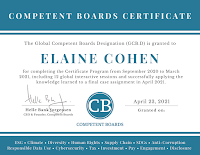


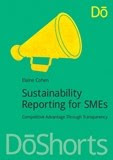
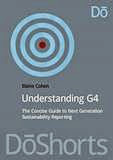
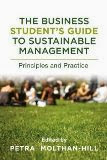
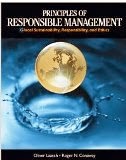
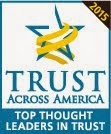









No comments:
Post a Comment